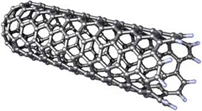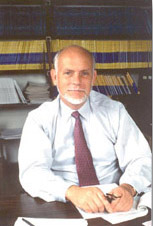Richard E. Smalley
Professor
Winner of the 1996 Nobel Prize in Chemistry
Professor Smalley received his B.S. degree
in 1965 from the University of Michigan and Ph.D. from Princeton
in 1973, with an intervening four-year period in industry as
a research chemist with Shell. During an unusually productive
postdoctoral period with Lennard Wharton and Donald Levy at the
University of Chicago, he pioneered what has become one of the
most powerful techniques in chemical physics -- supersonic beam
laser spectroscopy. He was named to the Gene and Norman Hackerman
Chair in Chemistry at Rice University in 1982. He was one of
the founders of the Rice Quantum Institute in 1979, and served
as the Chairman from 1986 to 1996. Since January 1990 he has
also been a Professor in the Department of Physics, and was appointed
Director of the new Center for Nanoscale Science and Technology
at Rice in 1996. In 1990 he was elected to the National Academy
of Sciences, and in 1991 to the American Academy of Arts and
Sciences. He is the recipient of many prestigious national and
international awards, including the 1996 Nobel Prize in Chemistry.



